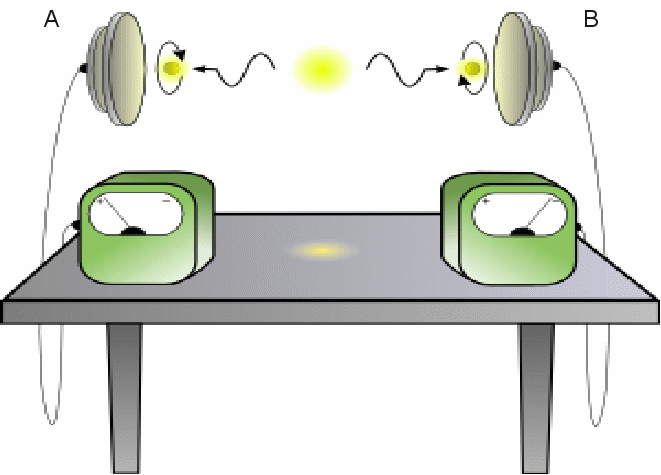This experiment, on one point of view, seems to violate the principle that no signal can travel faster than the speed of light. It implies a ghostly entanglement of wavefunctions of particles far separated in time and space, so that they have never been allowed to communicate with each other.

We have a source that emits electron-positron pairs, with the electron sent to destination A. According to quantum mechanics, we can arrange our source so that each emitted pair occupies a quantum state called a spin singlet. This can be viewed as a quantum superposition of two states, which we call state I and state II. In state I, the electron has spin pointing upward along the z-axis (+z) and the positron has spin pointing downward along the z-axis (-z). In state II, the electron has spin-1and the positron has spin+1. Therefore, it is impossible to associate either particle in the spin singlet with a state of definite spin. The particles are thus said to be entangled.
Observer A ice now measures the spin along the z-axis. Suppose she gets +1. According to quantum mechanics, the quantum state of the electron collapses into state I. So that angular momentum is conserved the state of the positron at B immediately collapses into state II, to conserve angular momentum though the two particles have not had any communication and the positron was in a superposition of the two states I and II.
No conclusive solution to this paradox has yet been found. Research continues into the meaning of quantum mechanics with possible avenues including hidden variable theory.
